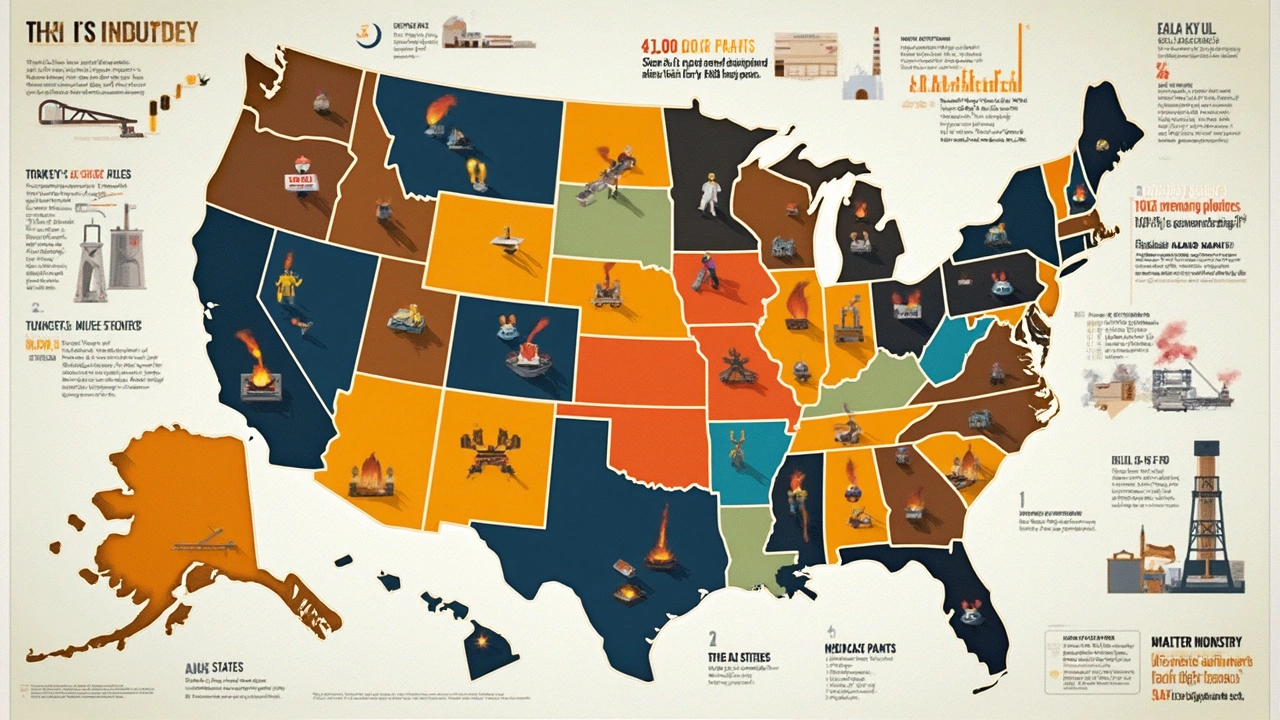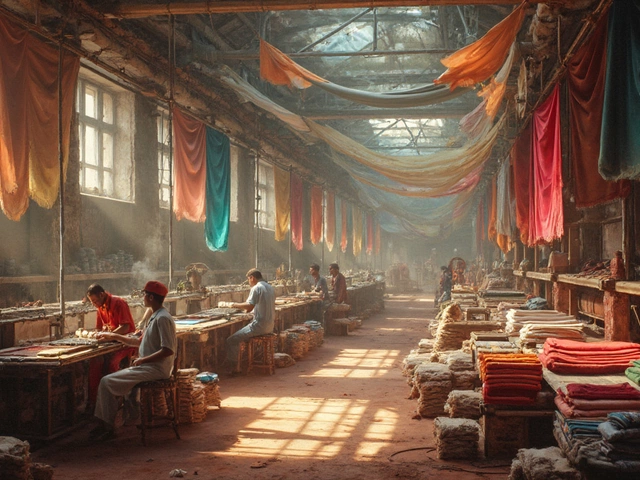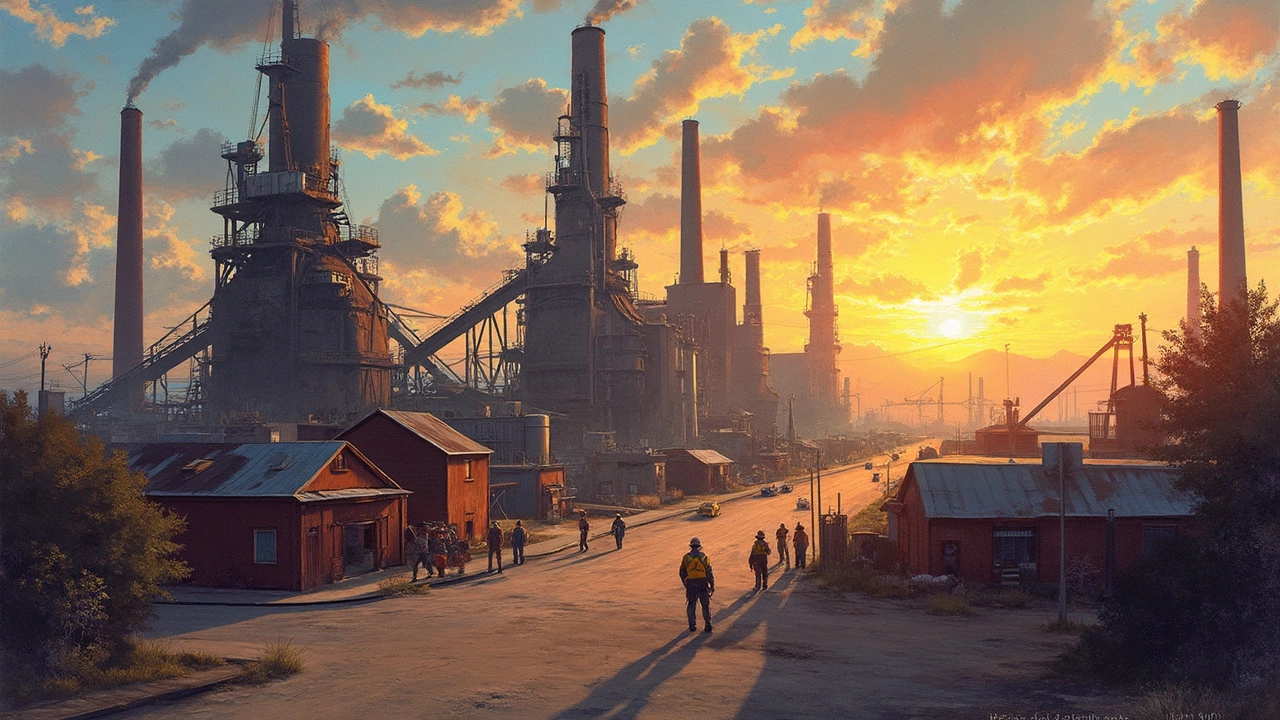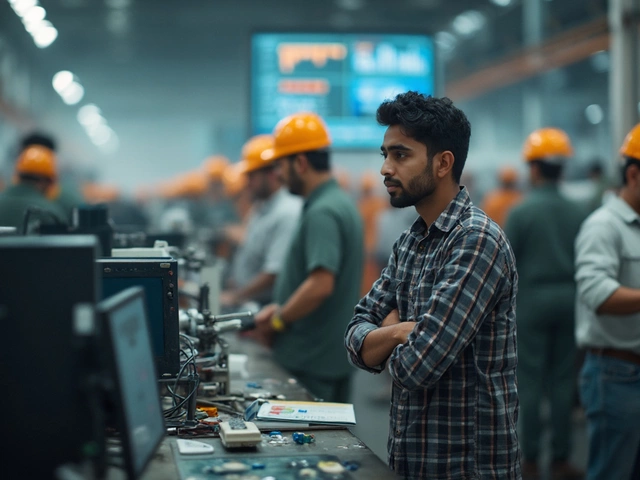When it comes to U.S. steel plants, did you know that most are clustered around the Great Lakes? Yep, it’s because of the easy access to shipping routes and raw materials. Steel plants are like the heart of American manufacturing, beating strong in states like Indiana, Ohio, and Pennsylvania. These places aren’t just dots on a map; they’re hubs where mountains of iron transform into the steel beams that hold up buildings and cars.
The biggest player, U.S. Steel, has its crown jewel, the Gary Works, located in Indiana. Not far behind, you'll find the Edgar Thomson Plant in Pennsylvania, which has been cranking out steel since 1875! These locations aren't just about history, though. They continue to power local economies and create jobs—right down to supporting mom-and-pop shops in nearby towns.
Curious about how their placement impacts regional economics? Well, these cities often thrive on the back of steel money. The industry's ups and downs ripple through local job markets and affect the supply chain nationwide. It sounds intense, but it's fascinating to see how interconnected everything is.
Major Locations
So, let's take a deeper dive into where those major U.S. Steel plants are kicking it. The Great Lakes area is the big dog in the yard, mainly because these waterways make it super easy to move all those heavy raw materials. We’re talking about places that are steel strongholds within states like Indiana, Pennsylvania, and Alabama.
Indiana: Gary Works
First stop is Indiana, home to the beast known as Gary Works. Nestled on Lake Michigan, it's the largest integrated steel mill in North America. This place isn’t just large; it’s vital. Gary Works produces a crazy amount of steel annually, contributing significantly to local employment and the broader economy.
Pennsylvania: Edgar Thomson Plant
Next, Pennsylvania is in the spotlight with its Edgar Thomson Plant. Located in Braddock near Pittsburgh, this facility's been running the show since 1875! Imagine the history packed in those industrial gears. It’s where Andrew Carnegie once invested, setting the pace for U.S. steel dominance.
Ohio: Cleveland Works
Ohio has a major player too—the Cleveland Works complex. It's not just about making steel here; it's about innovation. Cleveland Works focuses on producing steel types that others don't, like high-quality, custom steels essential for the auto industry.
- Location Advantage: States surround the Great Lakes for easy transport access.
- Economic Impact: Steady job creation and economic growth in regional communities.
- Product Range: Each location has specialties, contributing to a diverse manufacturing sector.
These facilities aren’t just dots on a map; they're the backbone of American industry. Each plant has its role in keeping manufacturing alive and kicking. Whether it’s the bustling activity at Gary Works or the historical powerhouse in Pennsylvania, these steel plants are essential in more ways than one!
Economic Impact
U.S. steel plants pack a serious punch when it comes to the economy. These facilities are like economic engines, and cities with steel manufacturing plants often see huge benefits. Not only do they provide thousands of direct jobs, but they also support a range of other local businesses.
Job Creation and Local Businesses
These steel plants create a whole lot of jobs. We're talking about engineers, factory workers, maintenance crews, and even office staff. It’s a full spectrum of roles. Plus, local businesses provide services like catering, logistics, and equipment repair right around these plants. It’s like a ripple effect that touches every part of the community.
Impact on State Economies
The states hosting these plants often see a significant part of their GDP coming from the steel industry. Take Indiana, for instance. The state's economy is boosted by the heavy presence of steel manufacturing, which impacts local tax revenues and funding for public services like schools and infrastructure.
Regional Economic Data
To make things a bit more concrete, here’s a look at some data:
| State | Annual Contribution to GDP (in billions) | Direct Employment |
|---|---|---|
| Indiana | 4.5 | 20,000 |
| Ohio | 2.2 | 12,000 |
| Pennsylvania | 3.1 | 15,000 |
The numbers make it clear that steel is more than just metal; it's a vital part of local economies.
Wider Economic Influences
Besides just jobs and income, these plants have a hand in shaping regional growth. The infrastructure needed to support them, like roads and ports, often leads to broader development. Not to mention, the industry boosts sectors like construction and manufacturing, fueling even more economic growth.

Historical Context
When you talk about the history of U.S. Steel plants, you're diving into a story that goes way back to the late 1800s. It all started in 1901, when the United States Steel Corporation was formed by combining J.P. Morgan and Elbert Gary's Federal Steel Company with Carnegie Steel Company and several others.
Andrew Carnegie, a name you've probably heard, was the mastermind behind Carnegie Steel. His efforts helped make Pittsburgh, Pennsylvania, an early epicenter of steelmaking in America. The creation of U.S. Steel marked a turning point when it became the world’s first billion-dollar corporation.
Early Growth
At the beginning of the 20th century, steel plants began popping up in strategic locations, mostly near the Great Lakes. This wasn’t by chance. These areas offered easier access to iron ore from places like Minnesota's Mesabi Range, as well as efficient shipping networks courtesy of the lakes themselves.
In the 1920s and 30s, the industry boomed. Places like Gary, Indiana, grew rapidly, powered by the steel industry. By 1950, U.S. steel production reached zenith, and so did the creation of jobs and wealth in these regions.
Challenges and Changes
The U.S. steel industry went through serious challenges starting in the late 1960s, facing increased competition from overseas. As foreign steel became cheaper, steel plants in the U.S. had to adapt or perish. Some plants shut down, while others innovated to keep up.
Despite these hurdles, U.S. Steel plants managed to survive and evolve. Today, they're not just relics of the past but are part of a modern, globally competitive industry.
| Year | Milestone |
|---|---|
| 1901 | Formation of U.S. Steel |
| 1920-30s | Major expansion and economic growth |
| 1950 | Peak U.S. steel production |
| 1960-70s | Increased competition and restructuring |
What surprises many is that these plants don't just symbolize a bygone industrial era but remain vital parts of their local communities. Whether adapting for new environmental rules or adopting the latest production technologies, they continue to shape the landscape – both literally and economically.
Future Directions
So, what's in the cards for U.S. Steel? Let's start with the buzz about greener steel. Yeah, U.S. Steel plants are hustling to go more eco-friendly. The push for reducing carbon footprints is real, and big players are investing in new tech to make cleaner steel without the usual emissions. This involves shifting to electric arc furnaces, which are more efficient and better for the environment.
Innovation and Technology
Automation is another hot topic in these plants. With tech evolving, U.S. steel manufacturers are looking to use AI and robotics for tasks previously done by humans. While that might sound like a sci-fi flick, it's all about boosting productivity and safety. It also means upskilling the workforce so they can handle these new tools.Industry Trends
We're also seeing a focus on lightweight steel production. Sounds contradictory, right? But lighter steel is a big deal for industries like automobile manufacturing, helping make more fuel-efficient cars. So, it's not just about quantity but quality and adaptability.Environmental and Economic Goals
Plus, there's a push for localizing supply chains. The pandemic taught us how shaky global supply systems can be, and steelmakers are taking that lesson to heart. By sourcing materials closer to the plants and narrowing their distribution areas, they’re looking to cut costs and increase reliability.The future might look a bit different, but it sure looks exciting for the steel plants and all that heavy metal magic they're known for. Adaptation is the name of the game, and those who nail it will likely lead the pack.







Write a comment